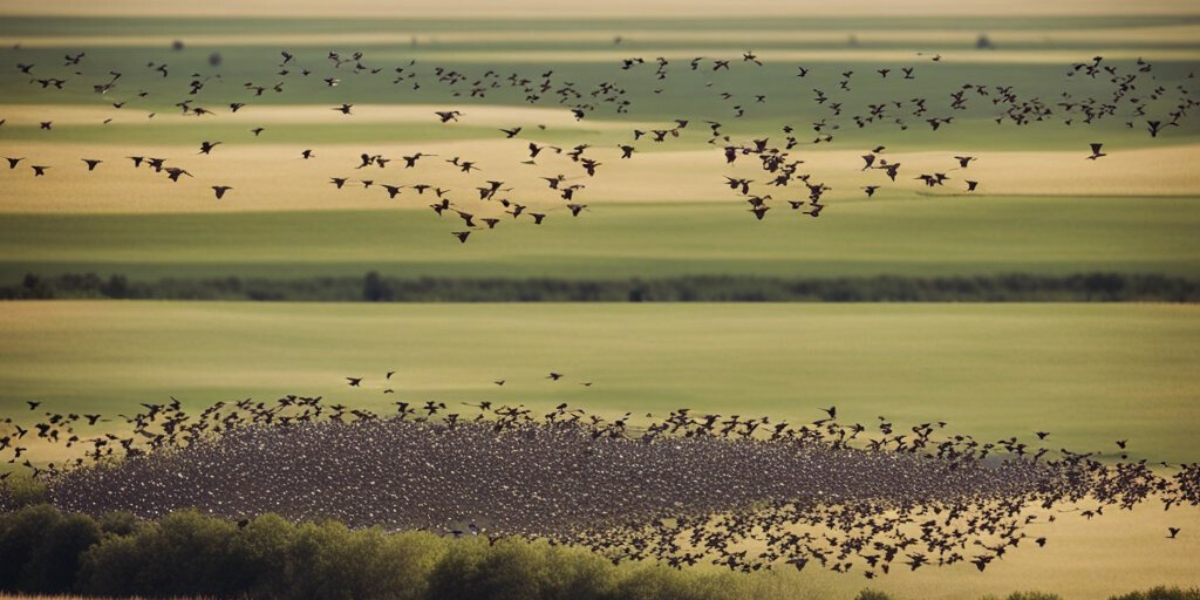Every spring and fall, billions of birds stream across the diverse Texas landscape as they complete immense migratory journeys between their breeding and wintering grounds. Texas provides critical habitat for migrating birds thanks to its central position along the Central and Mississippi flyways. Its complex network of urban, coastal, forest, and grassland habitats offers plentiful resources for weary migrants. But when can Lone Star State birdwatchers expect to see migrating species gracing their skies, backyards, and favorite birding hotspots? Let’s explore the typical timing and patterns of both spring and fall bird migration across the state of Texas.
Spring Migration Timeline in Texas
Spring migration in Texas runs from February through May as birds journey from tropical wintering locales to temperate breeding habitats farther north. The timing depends on a variety of factors:
Early Spring Migrants
Species wintering in the southern U.S. tend to pass through Texas first from February to mid-March:
- American Robins
- Red-winged Blackbirds
- Common Grackles
- Eastern Bluebirds
- Tree Swallows
Mid-Spring Migrants
neo-tropical migrants traveling longer distances arrive next between mid-March and mid-April:
- Scissor-tailed Flycatchers
- Barn Swallows
- Yellow-rumped Warblers
- Chimney Swifts
- Broad-winged Hawks
Late Spring Migrants
Last to arrive between mid-April and May are birds that winter in Central & South America:
- Orioles
- Tanagers
- Warblers
- Hummingbirds
- Night-herons
Exact Spring Migration Dates in Texas
Here are peak spring migration windows you can expect in Texas for some favorite species:
- Hummingbirds – Late March to mid May
- Warblers – Mid April to mid May
- Orioles – Late April to mid May
- Shorebirds – March through May
- Swallows – Mid March to late April
Of course, timing depends on local weather patterns and can vary across different regions of Texas. Tracking first arrival dates over the years for your area helps pinpoint when to expect migrating birds.
What Triggers Spring Migration to Texas?
A mix of external cues and internal programming initiates and sustains the push northward each spring:
- Increasing daylight – Longer days spur hormonal changes in many species that trigger migration urges.
- Warmer temperatures – Warming trends provide environmental cues that wintering grounds are thawing and food is becoming available farther north.
- Food availability – Insect hatches, sprouting vegetation, and other emerging food sources help dictate some birds’ migration timing.
- Internal clocks & genetics – Innate rhythms that are imprinted genetically drive migration schedules.
Spring Migration Challenges in Texas
Spring migrants must overcome many obstacles on their journeys north through Texas:
- Severe weather – Storms, cold snaps, heat waves, droughts, and flooding can be deadly for migrants lacking reserves.
- Lack of stopover habitat – Destruction of rest stop habitat makes refueling and resting more dangerous.
- Coastal barriers – Exhausted landbirds perish trying to cross wide bodies of water along the Texas coast.
- Collisions & light pollution – Bright city lights and tower collisions take a heavy toll on night migrating species.
Despite these risks, hardy migrants traverse hundreds or even thousands of miles stopping in Texas before reaching their final breeding destinations farther north.
Best Places to See Spring Migration in Texas
Some top birding hotspots to spot spring migrants in Texas include:
- Central & Coastal flyways – High densities of migrants follow these concentrated travel corridors.
- High Island – Famous for spectacular concentrations of dazzling warblers and other songbirds.
- Johnson Ranch – A mecca for viewing colorful tropical species like orioles, buntings, and grosbeaks.
- Hazel Bazemore Park – A migrant trap where exhausted birds stop to rest and refuel along the coast.
Fall Migration Timeline in Texas
Most fall migration through the state occurs between August and November as birds head south to warmer climates for the winter:
Early Fall Migrants
Some of the earliest migrants passing through include:
- Shorebirds (August)
- Swallows (August – September)
- Hummingbirds (August – September)
- Tanagers (August – September)
Mid-Fall Migrants
Many favorite birds funnel through Texas from September to October:
- Warblers
- Orioles
- Flycatchers
- Nighthawks
- Vireos
Late Fall Migrants
Late migrants like waterfowl arrive November through December:
- Sparrows
- Finches
- Blackbirds
- Ducks
- Geese
Exact Fall Migration Dates in Texas
Here are peak fall migration periods you can expect in the Lone Star State for common species:
- Warblers – Mid August to early October
- Hummingbirds – Mid August to late-September
- Sparrows – Late September to November
- Raptors – September through November
- Ducks – October through December
The timing differs across Texas based on weather patterns. Tracking first sightings annually helps determine when fall migrants arrive in your location.
What Triggers Fall Migration in Texas?
A combination of genetic programming and seasonal environmental cues initiate the mass exodus each fall:
- Shorter days – Decreasing daylight spurs hormonal changes and sparks migration urges.
- Dropping temperatures – Cooling trends signal birds to head south to warmer climates.
- Food availability – Scarcity of insects, seeds, and fruit motivates migration to areas with abundant resources.
- Internal clocks & genetics – Hardwired annual rhythms drive migration even without environmental cues.
Fall Migration Challenges in Texas
Navigating the migration maze through Texas poses many threats for South-bound migrants:
- Hurricanes & storms – Fall storm systems often coincide with peak migration, creating dangerous situations for birds.
- Lack of stopover habitat – Fewer suitable rest stop areas leave birds without places to replenish critical fat reserves.
- Collisions – Light pollution and structures take a huge toll, especially on inexperienced young birds.
- Predators & exhaustion – Depleted energy reserves make birds easy targets for predators.
Despite confronting immense odds, everything from tiny hummingbirds to massive hawks and geese traverse the Texas skies on their way to winter homes each fall.
Best Places to See Fall Migration in Texas
Top hotspots in Texas to witness the marvel of fall migration include:
- Central & Coastal flyways – Follow the main migration superhighways used by millions of birds.
- High Island – A birding mecca where dazzling tropical species concentrate along the coast.
- Anahuac NWR – A prime spot to witness raptors, ducks, geese, and other migrants along the upper coast.
- Hazel Bazemore Park – This county park is a migrant magnet where birds stop to rest and refuel.
- Bentsen-Rio Grande State Park – A premier destination for fall warblers, vireos, orioles, and tanagers near the Mexico border.
How to Support Migrating Birds in Texas
You can help weary migrants passing through your Texas yard by:
- Native plants – Provide nutritious native berries, seeds, and nectar sources.
- Water – Offer fresh water for drinking and bathing via birdbaths, drippers, or fountains.
- Shelter – Trees, shrubs, brush piles give shelter from storms and predators.
- Collision deterrents – Install window films, screens, or markings to prevent deadly collisions.
- Keep cats indoors – Protect vulnerable birds from cat predation during migration peaks.
Welcoming migrants to your wildlife oasis, even briefly, helps them survive the remarkable odysseys between their northern and southern homes.
People Also Read:
Conclusion
The spring and fall passages of migratory birds across Texas provide some of the most impressive wildlife spectacles on the planet. Though timing varies by species, early arrivals grace the state in February and August, while stragglers continue to funnel through into June and December. Providing Texas sanctuaries with nourishing food, fresh water, and shelter makes a world of difference for migrating songbirds, raptors, shorebirds, and waterfowl that traverse the Central and Coastal Flyways twice every year. Protecting fragile stopover habitats will help ensure migratory birds endure for generations to come.

